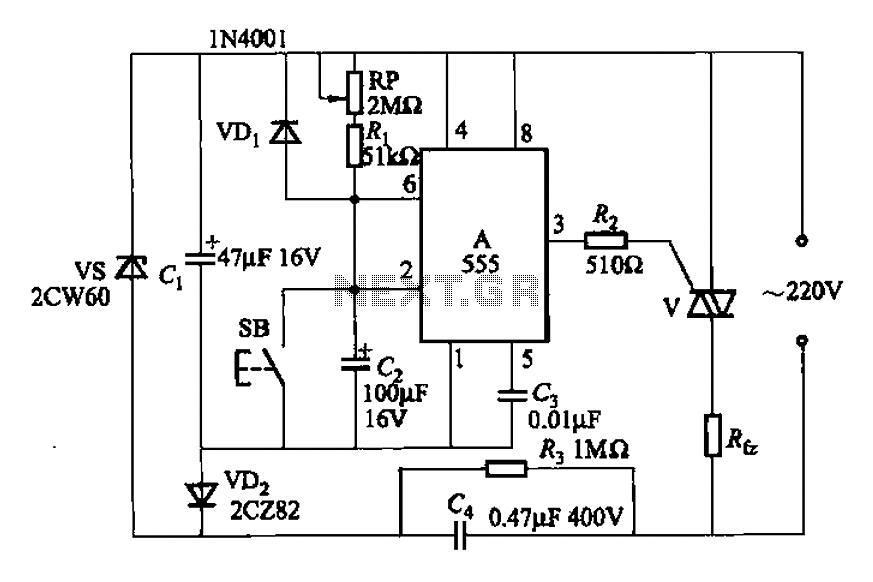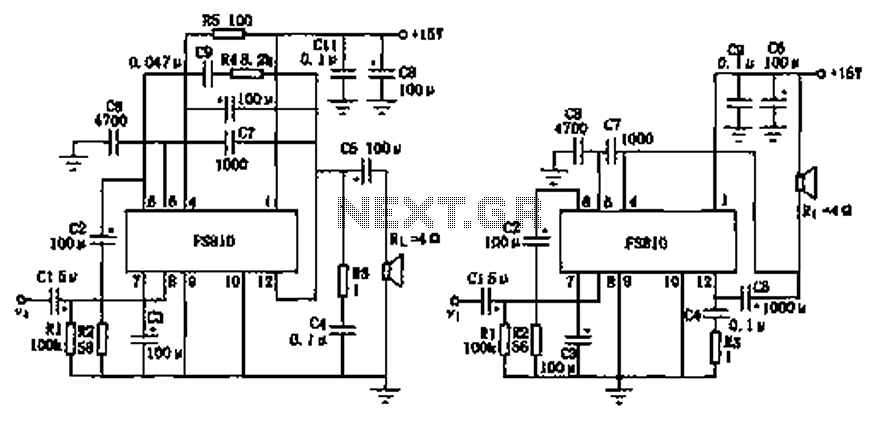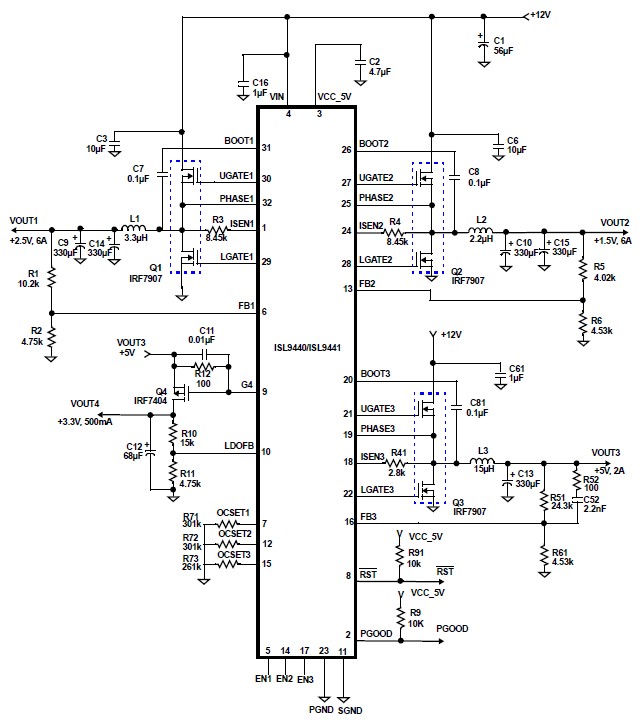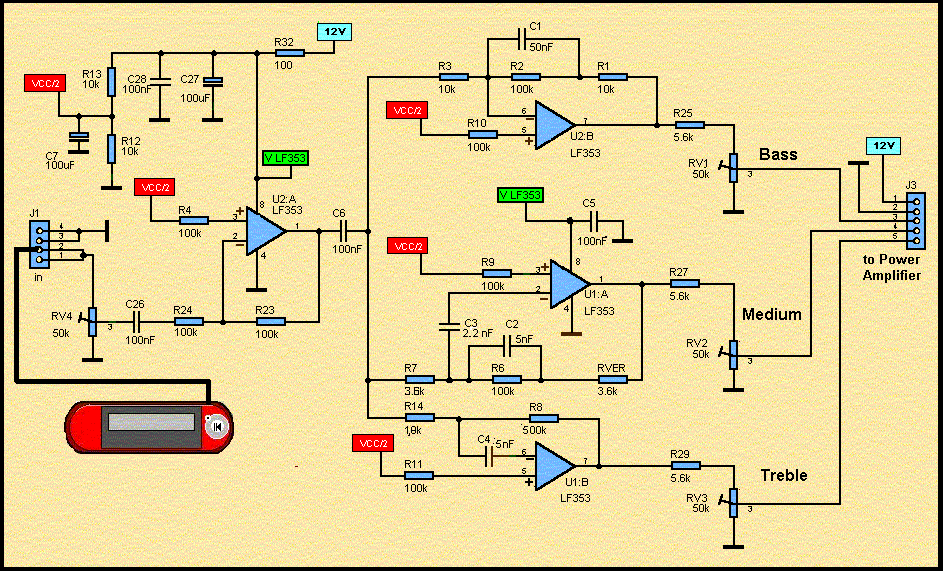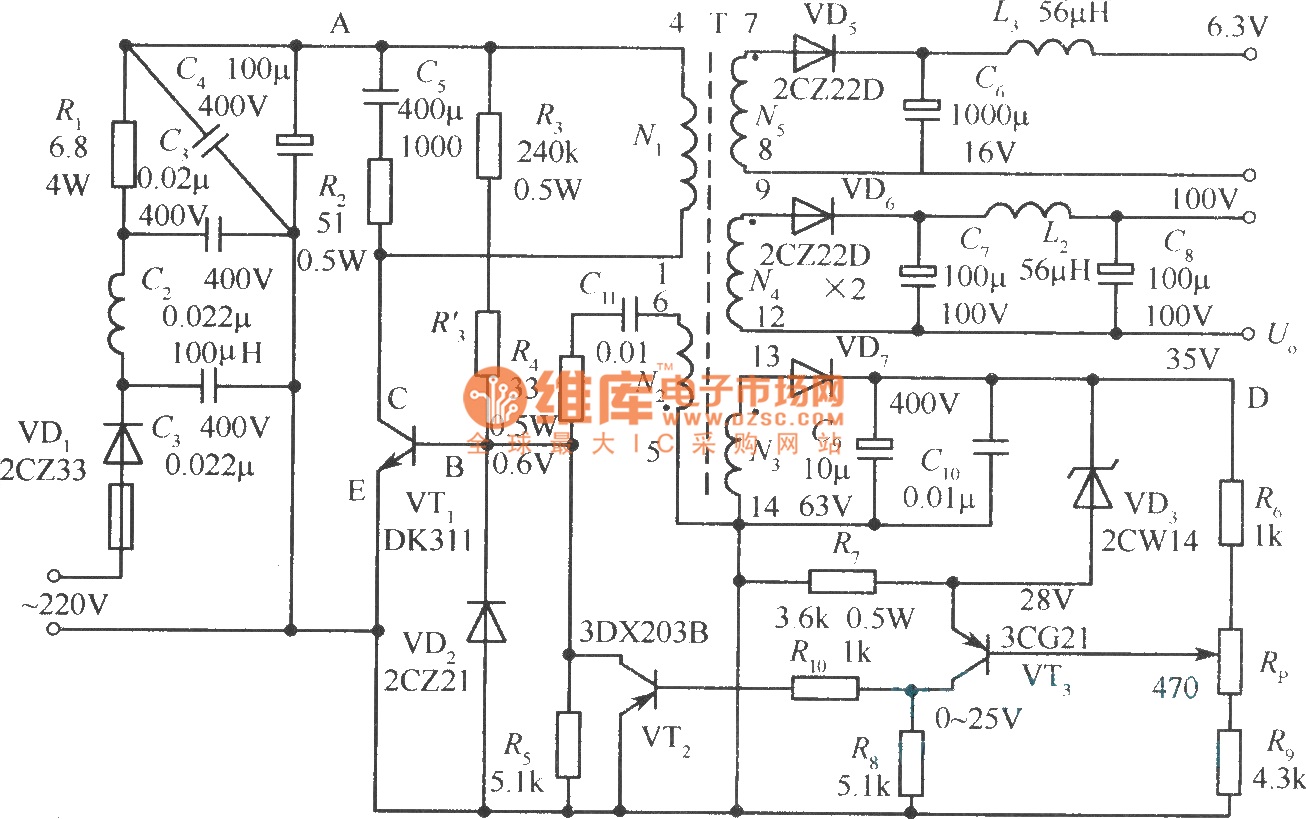
Effective output 50W distortion rate of 0.003% thick film hybrid amplifier

The main component of the circuit has been achieved using an integrated circuit (IC) with a significant number of bulk components, primarily capacitors. The internal circuit is designed to output from the differential amplifier using a PNP unipolar configuration, achieving a high gain. The amplitude of the mid-frequency class is substantial, and the conversion speed is determined by this stage. It is important to operate in high current conditions, utilizing a grounded base configuration to address high-frequency characteristics that may be adversely affected by the Miller effect. A transistor (Tr) is configured to establish a constant bias circuit, which helps to minimize power fluctuations caused by transient impacts. Another transistor (Tr) is employed to set the output bias, which also assists in temperature compensation by maintaining a stable voltage across the output. For large output currents, a Darlington connection is implemented at the output stage to enhance current gain.
The circuit design incorporates a differential amplifier at its core, utilizing a PNP transistor configuration to facilitate high gain performance. The use of numerous capacitors within the circuit serves to stabilize voltage levels and filter out noise, ensuring smooth operation across various frequencies. The output from the differential amplifier is critical, as it drives subsequent stages of the circuit.
In this configuration, the grounded base transistor arrangement plays a vital role in enhancing high-frequency response. By mitigating the Miller effect, which can degrade performance at elevated frequencies, the circuit maintains its fidelity and responsiveness. The constant biasing circuit is essential for stabilizing the operating point of the transistors, preventing fluctuations that could lead to distortion or inefficiency.
The inclusion of temperature compensation mechanisms is also noteworthy. The output bias transistor is designed to adjust for thermal variations, ensuring consistent performance even as environmental conditions change. This is particularly important in applications where the circuit may experience significant temperature fluctuations.
The output stage employs a Darlington pair configuration, which significantly increases current gain. This arrangement allows the circuit to drive larger loads without compromising performance, making it suitable for applications requiring high output currents. The combination of these design elements results in a robust circuit capable of delivering high performance while maintaining stability and reliability. As the main part of the circuit has been achieved Ic! Of bulk components are primarily large number of capacitors. Internal circuit shown, the output level from the A t, Tr. Co mposition current mirror circuit that converts the output of the differential amplifier PNP unipolar, and obtain a high gain of gain. The amplitude of the middle class is large, and the conversion speed is decided by this stage, we should try to make it work in high current, well make T ,.
Grounded base (and Tr, composition tllt to a shade amplifier), to solve the high-frequency characteristics caused by the deterioration of the Miller effect. rr. Change, Tr Po set for the constant bias circuit that can suppress the power generated by the impact. Tr, is used to set the output bias transistor, in addition to the base aims to take along a plate shot dead zone VBl voltage between the poles i also play a role in temperature compensation.
For large output current, the output stage Darlington connection, in order to improve electric foot magnification.
The circuit design incorporates a differential amplifier at its core, utilizing a PNP transistor configuration to facilitate high gain performance. The use of numerous capacitors within the circuit serves to stabilize voltage levels and filter out noise, ensuring smooth operation across various frequencies. The output from the differential amplifier is critical, as it drives subsequent stages of the circuit.
In this configuration, the grounded base transistor arrangement plays a vital role in enhancing high-frequency response. By mitigating the Miller effect, which can degrade performance at elevated frequencies, the circuit maintains its fidelity and responsiveness. The constant biasing circuit is essential for stabilizing the operating point of the transistors, preventing fluctuations that could lead to distortion or inefficiency.
The inclusion of temperature compensation mechanisms is also noteworthy. The output bias transistor is designed to adjust for thermal variations, ensuring consistent performance even as environmental conditions change. This is particularly important in applications where the circuit may experience significant temperature fluctuations.
The output stage employs a Darlington pair configuration, which significantly increases current gain. This arrangement allows the circuit to drive larger loads without compromising performance, making it suitable for applications requiring high output currents. The combination of these design elements results in a robust circuit capable of delivering high performance while maintaining stability and reliability. As the main part of the circuit has been achieved Ic! Of bulk components are primarily large number of capacitors. Internal circuit shown, the output level from the A t, Tr. Co mposition current mirror circuit that converts the output of the differential amplifier PNP unipolar, and obtain a high gain of gain. The amplitude of the middle class is large, and the conversion speed is decided by this stage, we should try to make it work in high current, well make T ,.
Grounded base (and Tr, composition tllt to a shade amplifier), to solve the high-frequency characteristics caused by the deterioration of the Miller effect. rr. Change, Tr Po set for the constant bias circuit that can suppress the power generated by the impact. Tr, is used to set the output bias transistor, in addition to the base aims to take along a plate shot dead zone VBl voltage between the poles i also play a role in temperature compensation.
For large output current, the output stage Darlington connection, in order to improve electric foot magnification.
